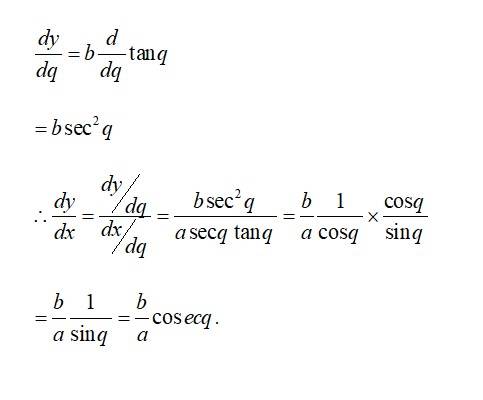Maths
Get insights from 6.5k questions on Maths, answered by students, alumni, and experts. You may also ask and answer any question you like about Maths
Follow Ask QuestionQuestions
Discussions
Active Users
Followers
New answer posted
6 months agoContributor-Level 10
In a particular solution, there are no arbitrary constant.
Hence, option (D) is correct.
New answer posted
6 months agoContributor-Level 10
The number of arbitrary constant is general solution of D.E of 4th order is four.
Option (D) is correct.
New answer posted
6 months agoContributor-Level 10
13. We can write given statement as
P(n): …
If n=1, we get
P(1): =4=(1+ 1)2=22=4
which is true.
Consider P(k) be true for some positive integer k.
… (1)
Now, let us prove that P(k+1) is true.
…
By using (1)
=(k+1)2
=(k+1)2
=(k+1)2+2(k+1)+1
={(k+1)+1}2
P(k+1) is true whenever P(k) is true.
Therefore, by principle of mathematical induction, the P(n) is true for all natural number n.
New answer posted
6 months agoContributor-Level 10
12. Let the given statement be P(n) i.e.,
P(n)=a+ar+ar2+ … +arn-1==
If n = 1, we get
P(1)=a= =a
which is true.
Consider P(k) be true for some positive integer k
a+ar+ar2+ … +ark-1= (1)
Now, let us prove that P(k+1) is true.
Here, {a+ar+ar2+ … +ark-1}+ar(k+1) –1
By using (1),
=
=
=
=
=
P(k+1) is true whenever P(k) is true.
Therefore, by the principle of mathematical induction, statement P(n) is true for all natural numbers i.e.,
New answer posted
6 months agoNew answer posted
6 months agoContributor-Level 10
Given,
Differentiate with 'x' we get
The given is a solution of the given D.E
New answer posted
6 months agoContributor-Level 10
11. we can write the given statement as
+ … + =
If n=1,
P(1)= = = = =
which is true.
Consider P(k) be true for some positive integer k
+ … + =
Let us prove that P(k+1) is true,
+ … + .
By equation (1), we get
=
=
=
=
=
=
=
=
=
= =
P(k+1) is true whenever P(k) is true.
Hence, By the principle of mathematical induction, the P(n) is true for all natural number n.
Taking an Exam? Selecting a College?
Get authentic answers from experts, students and alumni that you won't find anywhere else
Sign Up on ShikshaOn Shiksha, get access to
- 65k Colleges
- 1.2k Exams
- 679k Reviews
- 1800k Answers






